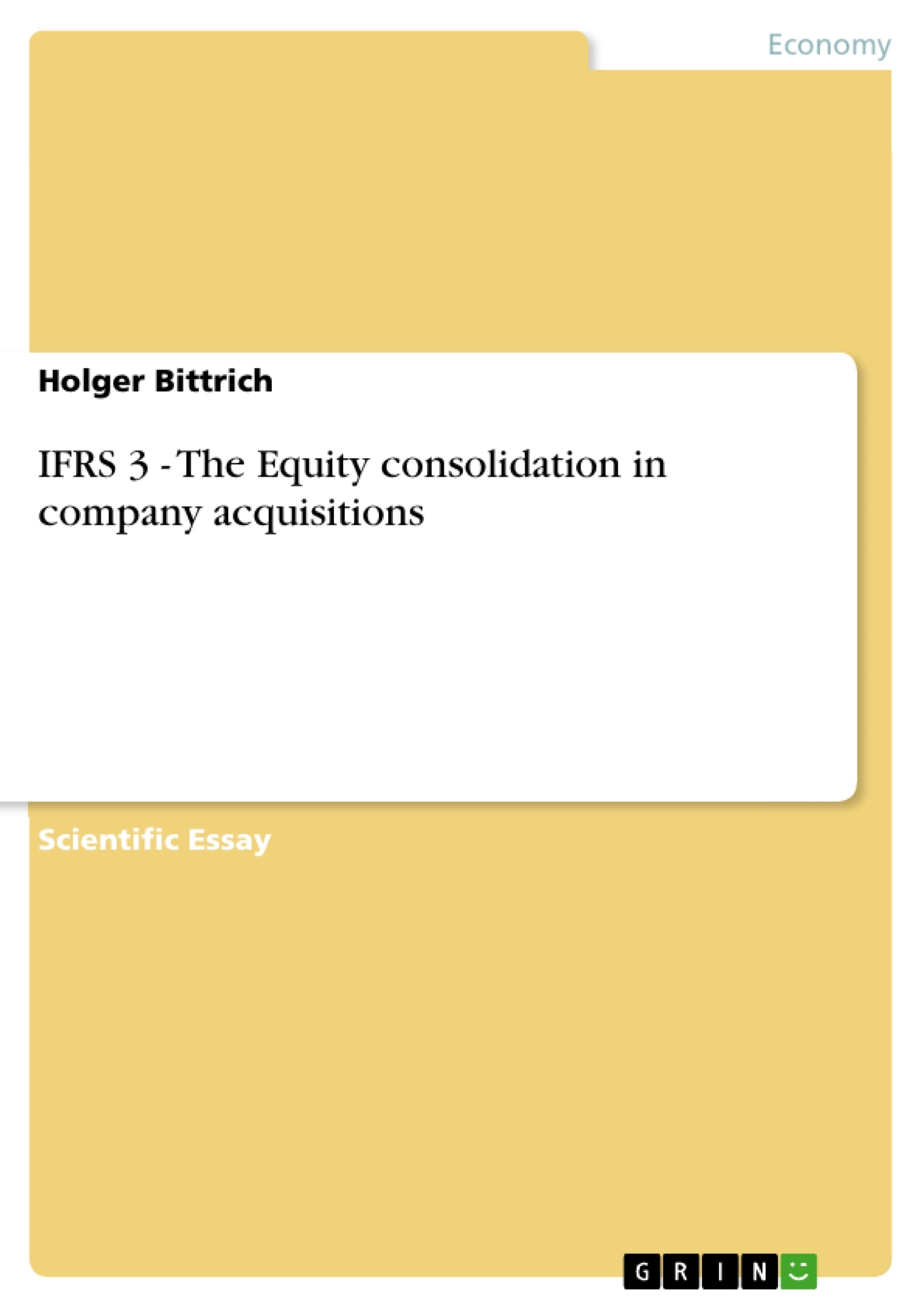A purchaser has to be identified in all business combinations in accordance with IFRS 3. This is important because with the purchase method the net assets and liabilities of the acquired company are revalued, whereas the net assets and liabilities of the purchaser remain at book values.
The purchaser is the company which obtains control over another company. Control is obtained when an company achieves the power to govern the financial and operating policies of another company, and draws benefits from that activity.
As regards the definition of control, two cases are differentiated:
Case 1 is based on acquisition of the majority of voting rights, i.e. a majority of more than 50%.
Case 2 describes obtaining control where less than half of the voting rights are obtained.
Inhaltsverzeichnis (Table of Contents)
- Identifying the purchaser
- Determining the acquisition date
- Determining the purchase costs of a company acquisition
Zielsetzung und Themenschwerpunkte (Objectives and Key Themes)
This text focuses on the application of IFRS 3 in the context of company acquisitions. It aims to provide a comprehensive guide for understanding and applying the standard's key provisions.
- Identifying the purchaser in a business combination
- Determining the acquisition date for consolidation purposes
- Calculating the purchase costs of a company acquisition
- Revaluation of assets and liabilities on first consolidation
- Accounting treatment of directly attributable costs
Zusammenfassung der Kapitel (Chapter Summaries)
- Identifying the purchaser: This section examines the criteria for determining the acquirer in a business combination, focusing on cases where control is obtained with less than 50% of voting rights and reverse acquisitions.
- Determining the acquisition date: This chapter explores the significance of determining the acquisition date and its relevance for consolidation, valuation, and goodwill determination.
- Determining the purchase costs of a company acquisition: This section delves into the process of calculating acquisition costs, outlining the components included and excluded from this calculation.
Schlüsselwörter (Keywords)
Key terms and concepts discussed in this text include IFRS 3, business combinations, control, acquisition date, purchase costs, fair value, consolidation, and reverse acquisitions.
- Citar trabajo
- Holger Bittrich (Autor), 2009, IFRS 3 - The Equity consolidation in company acquisitions, Múnich, GRIN Verlag, https://www.grin.com/document/121001



